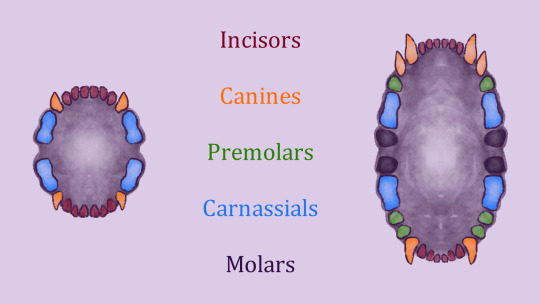#this was literally so interesting to research and enjoyable to play around with genuinely tysm for this question
Explore tagged Tumblr posts
Note
Hey quick anatomy question if you have time!! I know galra are mammals so it makes sense that kits are born without teeth or very small teeth so that they can nurse, without causing too much pain to their mothers but do galra lose baby teeth? Or do the teeth they first grow just grow stronger and larger and as their skills grow new teeth grow in the back? What do you think? Question inspired bc a saw one of those pics of toddlers/young kids skulls with the adult teeth growing above the baby teeth that hadn’t fallen out yet!
Thanks for answering questions like these I love the lore and learning about galra it’s so fun and interesting. I remember one of the shows creators saying theyd like to explore the blades of marmora more either through a book or separate series. But since the fandom was so batshit and hostile to the show creators I wouldn’t be surprised if they never want anything to do with this media again which is unfortunate. Finding your fic was like a balm for my curiosity bc I’ve always thought the galra were so interesting and it’s sad we didn’t get to learn more about really any of the aliens, would’ve been real fun I think
Ty hope you are well!
So most mammals are born toothless (due to their initial food source being their mother's milk) and will go forth to have two sets of teeth in their lifetime, the first being their baby—or deciduous—teeth as they wean, and their second their permanent adult teeth as they mature. The galra are no exception to this!

So yes, galra kitlings are born toothless and remain that way until they're weaned at around 10 imperial decaphobes—that's right, a full decade!—which, if you're in need of a refresher on galra lifespans, is the human equivalent of 2-3 years old. At this age kitlings begin teething, their first set of teeth making a rapid appearance until they have the full set of 20: twelve incisors, four canines, and four carnassials. These deciduous teeth last them far longer than the human equivalent, as galra children don't typically begin to lose them until early adolescence (~40idp) and their permanent replacements might not finish emerging until young adulthood (~70idp). Eventually, however, they'll find themselves with a truly magnificent set of 32 pearly whites—the same quantity as humans, but with an entirely different distribution.
12 / 12 Incisors: these are the sharp, flat, thin-edged teeth at the front of the mouth used for both grooming, and shearing food. Both kits and adults have twelve of these teeth—eight central incisors at the front of the mouth, four on each row, book-ended by four lateral incisors.
4 / 6 Canines: these are the sharp, pointed, sickle-like teeth that sit next to the incisors—the longest of all the teeth and deeply embedded in the jaw bone, they're designed to grasp and tear tough meat. Kits have four of these teeth, while adults have six, and the additional pair are the largest, situated in the upper jaw next to the lateral incisors.
0 / 6 Premolars: these teeth are larger than both incisors and canines, with many ridges to help chew and grind up food, but do not emerge until adolescence.
4 / 4 Carnassials: the largest tooth in the jaw, these teeth are modified pre-molars—elongated like scissor-blades, and specialised for cutting and shearing meat. These are the only type of tooth that humans do not have an equivalent of, with carnassials on Earth being found in the mouths of carnivorous predators such as dogs, cats, hyenas, and bears.
0 / 4 Molars: larger than all but carnassials, these teeth have a flat ridged surface that serves to chew and grind up food. As with premolars, these teeth do not emerge until adolescence.
#I really did not know how much fun I'd have with galra dental anatomy but here we are#this was literally so interesting to research and enjoyable to play around with genuinely tysm for this question#just look at those little baby galra teefs omfggggg#though the modern galra are omnivorous they do still tend to lean towards a meat-heavy diet and their teeth really lend themselves to this#anyway I'm really glad that LB could serve as ''a balm for your curiosity'' (cute!!) because I have a terribly good time with worldbuilding#and I am well! thank you!#Ao3 Little Blade#sa screams back#galra history & culture
25 notes
·
View notes